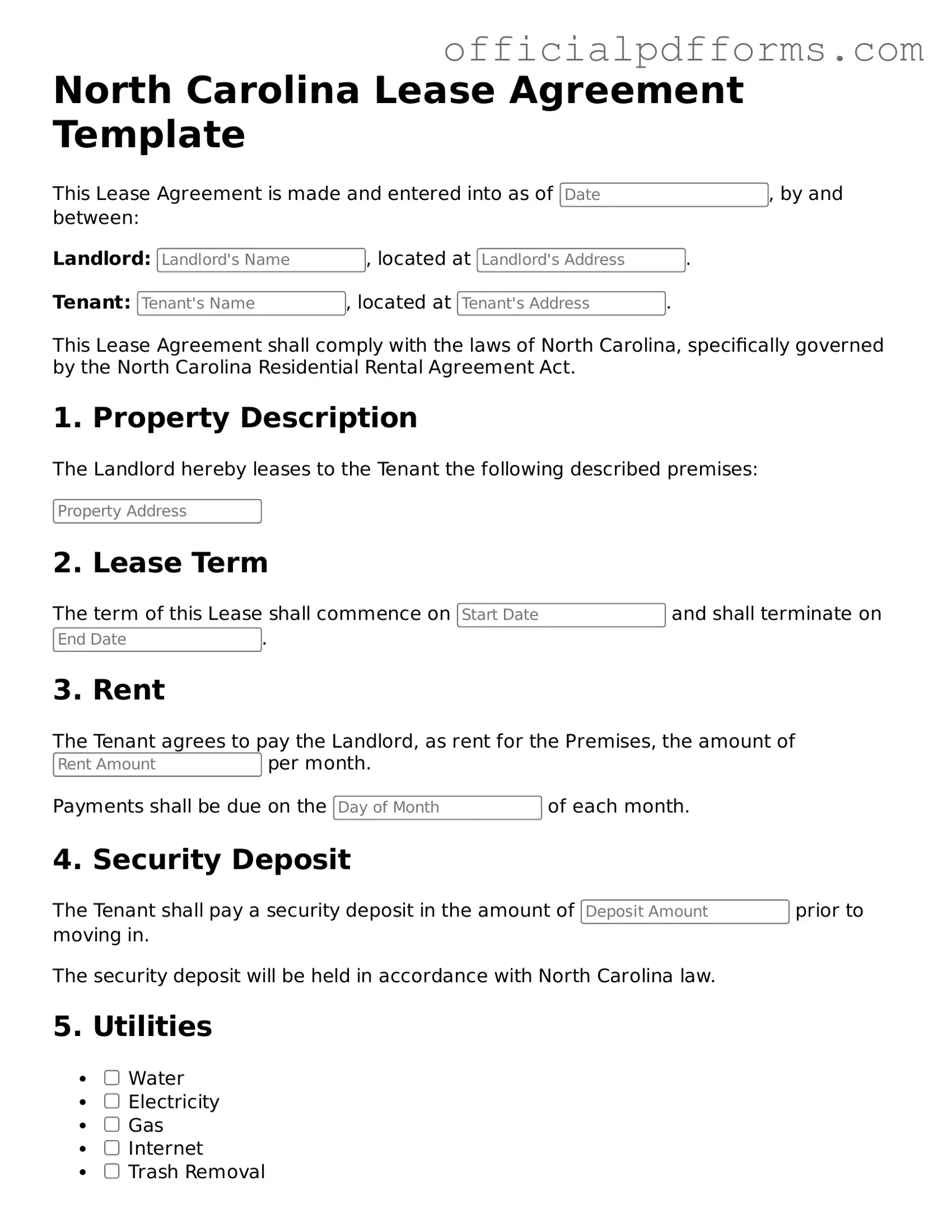A North Carolina Lease Agreement form is a legal document that outlines the terms and conditions under which a landlord rents property to a tenant. This agreement typically includes details such as the duration of the lease, the rental amount, security deposit requirements, and the responsibilities of both parties. It serves to protect the rights of both the landlord and the tenant by providing a clear framework for the rental relationship.
What key elements should be included in the lease agreement?
Essential elements of a North Carolina Lease Agreement include:
-
Names of the parties:
The full names of the landlord and tenant must be included.
-
Property description:
A detailed description of the rental property, including the address.
-
Lease term:
The start and end dates of the lease should be specified.
-
Rent payment details:
The amount of rent, payment due date, and accepted payment methods must be outlined.
-
Security deposit:
Information regarding the security deposit amount and conditions for its return should be included.
-
Maintenance responsibilities:
The agreement should clarify which party is responsible for maintenance and repairs.
-
Termination conditions:
The conditions under which the lease may be terminated early should be detailed.
Is a written lease agreement required in North Carolina?
While North Carolina law does not mandate a written lease for rental agreements of less than three months, it is highly advisable to have a written lease for any rental term. A written document provides clarity and serves as evidence of the agreed-upon terms. This can help prevent disputes and misunderstandings between landlords and tenants.
What happens if the lease does not specify a duration?
If a lease does not specify a duration, it is generally considered a month-to-month rental agreement. This means that either party can terminate the lease with proper notice, which in North Carolina is typically one month. However, it is always best practice to clarify the lease duration to avoid ambiguity.
Can a landlord increase rent during the lease term?
In North Carolina, a landlord cannot increase rent during the lease term unless the lease agreement explicitly allows for such increases. If the lease is month-to-month, the landlord must provide proper notice, typically 30 days, before implementing a rent increase. It is essential for both parties to understand the terms regarding rent adjustments.
What rights do tenants have under a lease agreement?
Tenants in North Carolina have several rights under a lease agreement, including:
-
The right to a habitable living environment.
-
The right to privacy, meaning landlords must provide notice before entering the property.
-
The right to receive the return of the security deposit within 30 days after moving out, minus any lawful deductions.
-
The right to seek legal remedies if the landlord fails to uphold the terms of the lease.
What should a tenant do if they want to terminate the lease early?
If a tenant wishes to terminate the lease early, they should first review the lease agreement for any clauses related to early termination. If the lease allows for it, the tenant must follow the specified procedure, which may include providing written notice. If the lease does not allow for early termination, the tenant may be responsible for paying rent until the end of the lease term unless they can negotiate a mutual agreement with the landlord.
